Little Monsters - Part X: Harlequin Ladybird!
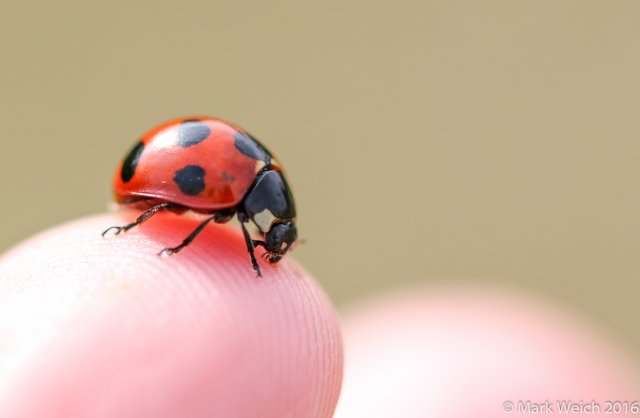
The Harlequin Ladybird Beetle, Harmonia axyridis, is a very pretty little monster. Yet it is certainly a monster.
A good deal of its monstrosity is contained within its brightly coloured body.
Introduced several times in North America for pest control, it has now become a pest itself in many parts of the world. It has done this as it is extremely well armed.
Like most ladybird beetles, its blood or hemolymph contains "isopropyl methoxy pyrazine" a huge name of a molecule common to most ladybirds but in very high concentration in the Harlequin Ladybird, as well as a species specific compound called "harmonine". These chemicals are used for defense, when handling these beetles, they exude their hemolymph from their legs, you'll notice a greenish brown, foul smelling liquid on your fingers or hands where the beetle stood. Chemical information from wikipedia
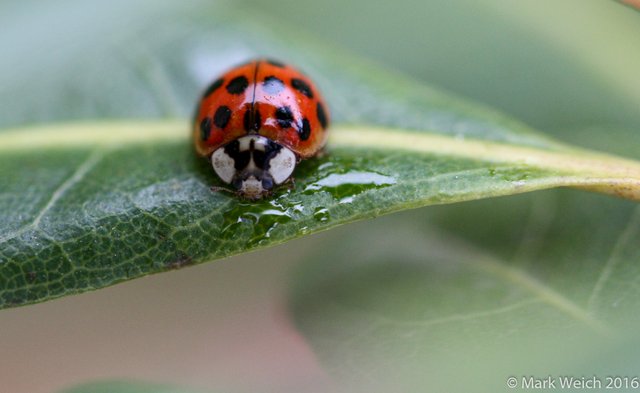
While all ladybirds have foul smelling poisons in their blood, the Harlequin Ladybird takes defense to another level and has another biological weapon in its arsenal. It carries a parasite, which stays dormant in the Harlequin species. However, when ingested by other ladybirds the parasite becomes active and kills its new host. (source article: Nature.com: Invasive ladybird has biological weapon)
It has weaponized its blood; this is the closest creature I know of to the xenomorph from the Alien series.
While adult ladybirds are hungry predators, dining on aphids and dozens of other pest species; it's their godzilla looking larva that are truly voracious. The white tuft on its head is not a bunch of bristles but rather an aphid's corpse, a second soon to be consumed aphid is near the larva's mid pair of legs.
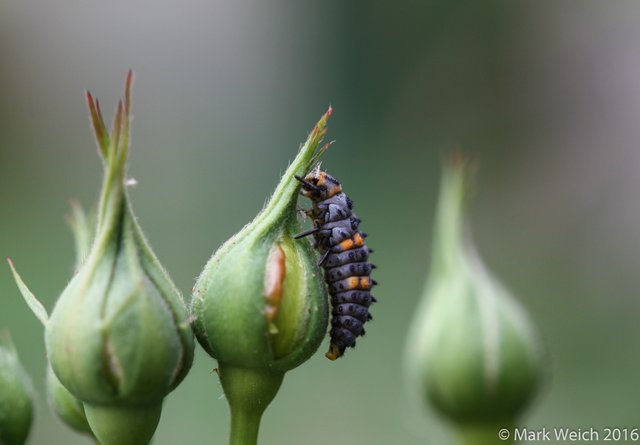
One more good thing about the larva is that it can not fly away. Gently relocating them from the fields, to the rose garden helps a great deal with pest control! Since this species is native to East Asia and Japan, I can find them wild and bring them to the garden to help defend my wife's roses.
This well fed young beetle soon pupated on the very same rose bush that I placed it on after few days:
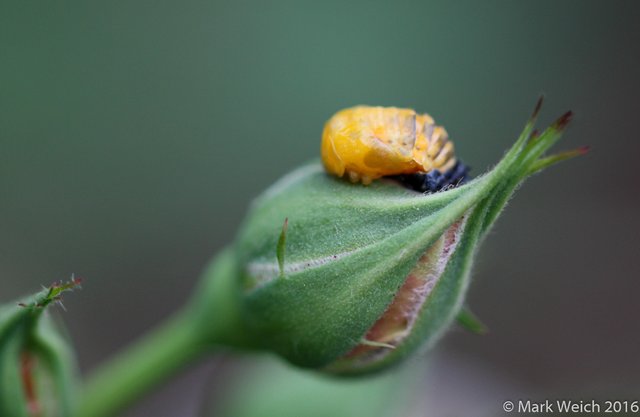
Here it is shedding the last of the black larval exoskeleton, the yellow colour will darken and in a few days the adult ladybird will emerge. You can already see the dark patches that will be its spots and two of the left side legs.
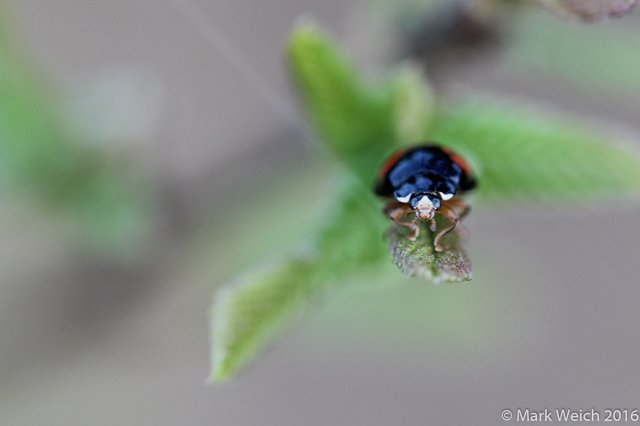
Ready to take off in search of a mate, or perhaps some more deliciously sweet aphids to dine upon.
All of the ladybirds in this post are of the same species. The Harlequin Ladybird has a large range of phenotypes and can be completely red with no spots on the elytra, the shell-like wing covers, or be so covered in spots as to appear to have a leopard print.
This was a fun post to write, they are so deceptively monsterous!
I hope you enjoyed it as well!
Sources for facts: Wikipedia and Nature
Follow and upvote to see the next installment in your feed!
Reblogging is also fully endorsed!
Comments are always welcome!
Little Monsters - Part I: Wolf Spiders
Little Monsters - Part II: Golden Orb Weaver
Little Monsters - Part III: Lynx Spiders!
Little Monsters - Part IV: Decorator Orb Weaver
Little Monsters - Part V: Black Back Paper Wasp
Little Monsters - Part VI: Dragonfly
Little Monsters - Part VII: Indian Fritallary
Little Monsters - Part VIII: Giant Japanese Hornet
Little Monsters - Part IX: Praying Mantis!
I maintain and reserve copyright on all of my photos.
"It has weaponized its blood; this is the closest creature I know of to the xenomorph from the Alien series."
Please someone draw this combo
An Alien-Ladybird hybrid would be fantastic!
The third one is awesome! That larvae has some serious style.
Yeah, he's rocking that punk haircut.!
Great pictures!
Thank you very much @cathi-xx!
Beautiful:)
:D Thank you @thecryptofiend!
@mweich I am loving photo/story time combos!
Thanks, I think that the combination makes it a bit more interesting than just a collection of pictures. :)
That third shot is stunning!
Thank you very much @condra!
@mweich upvoted! Knowing how small those guys are specially the larvae and yet having them captured like this - is freaking awesome!
I love the one where in the lady bug is taking a sip - it's beautiful!
Thank you so very much!
Great Post! nice pictures! And good you posted the sources as well!
Thanks. Yes, if I need to check to make sure my information is correct or if the claims seem a bit too fantastic, I'll put an independent source. It's also good to give a starting point to someone that might want to learn more about the subject.
You sure made these ladybugs seem so pretty! But I agree that these little beetles are monsters! I know you are in Japan where these are native, but in North America, many of our native ladybugs are in trouble -- in part due to these Harlequin Ladybirds. Whenever the Harlequins appear, native populations suffer. The Lost Ladybug Project (http://www.lostladybug.org) asks people to report their ladybugs, to help document how the little beetles are faring. Kids are especially good at helping out, because they are close to the ground and love ladybugs. But Steemit macrophotographers - in North America - might be good ladybug reporters, too.